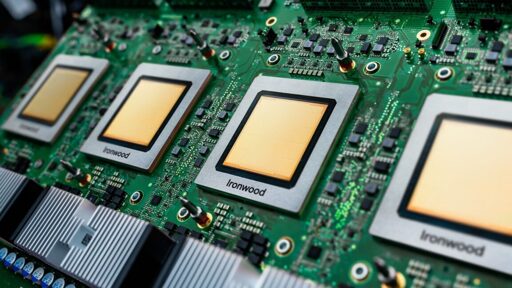It was probably always when, not if, Google would add its name to the list of companies intrigued by the potential of orbiting data centers.
Google announced Tuesday a new initiative, named Project Suncatcher, to examine the feasibility of bringing artificial intelligence to space. The idea is to deploy swarms of satellites in low-Earth orbit, each carrying Google’s AI accelerator chips designed for training, content generation, synthetic speech and vision, and predictive modeling. Google calls these chips Tensor Processing Units, or TPUs.
“Project Suncatcher is a moonshot exploring a new frontier: equipping solar-powered satellite constellations with TPUs and free-space optical links to one day scale machine learning compute in space,” Google wrote in a blog post.
“Like any moonshot, it’s going to require us to solve a lot of complex engineering challenges,” Google’s CEO, Sundar Pichai, wrote on X. Pichai noted that Google’s early tests show the company’s TPUs can withstand the intense radiation they will encounter in space. “However, significant challenges still remain like thermal management and on-orbit system reliability.”



Radiators typically need to have something to vent the heat into. While there is still a slight atmosphere in LEO, I fail to see how it would be more efficient than doing it all on the ground. Servers are basically heaters that do fancy things in the middle, they’ll have much more heat than a standard LEO satellite. Plus, in LEO, you constantly have to correct your orbit (or burn up). Then, you have to also be able to cool down while in the sun, and likely heat up in the dark. On top of that, good luck if you have hardware fail. Then there’s latency on top of it all.
My point is that how is all of that more efficient than doing it on the ground, where you don’t have to consider these things?
I don’t mean transfer to the air, I mean radiating heat!
When you have a hot object, in space or in an atmosphere, you can see it on infrared cameras because it’s releasing that energy as infrared light.
Some materials are better at releasing their heat energy as infrared light than others, and having large panels of such a material gives lots of surface area to radiate that energy into space as infrared radiation. The heat transfer to any thin atmosphere found at that kind of altitude would be negligible.
As for heating up in the dark, you could just have a swarm of these that shut down if they’re in the dark, and make sure you have at least a few running at all times.
As for maintenance, I agree. It’s why undersea data centers haven’t really taken off, because it’s very hard to get people down there to take care of things.
I know what you meant. You’re missing my point. Servers at this scale heat up much more than your average satellite. There is no efficiency gain, only loss, it’s really not efficient compared to even closed loop cooling systems on the ground, and they don’t even want to use closed loop as it stands.
What would the benefit of having swarms of these in space be? I don’t see the benefit in any sense. It’s more expensive, you cannot do maintenance, it costs much more money, and you cannot shoot entire datacenters into space with as much ease as just building them on the ground in the first place.
It seems to me that they just want another way to generate attention and money. They’ll shoot one of these up there, and then continue to waste water on the ground anyway.
Considering how much the largest companies are making deals with and just handing money to each other during this AI bubble… I’m not sure money is a concern.
The more that they can bedazzle the concept of a data center and distract from the failures of current LLMs, the more money they can make, which very much aligns with what you’re saying.
Thank you for providing that little bit of context, and apologies for misunderstanding. Have a great day! :)